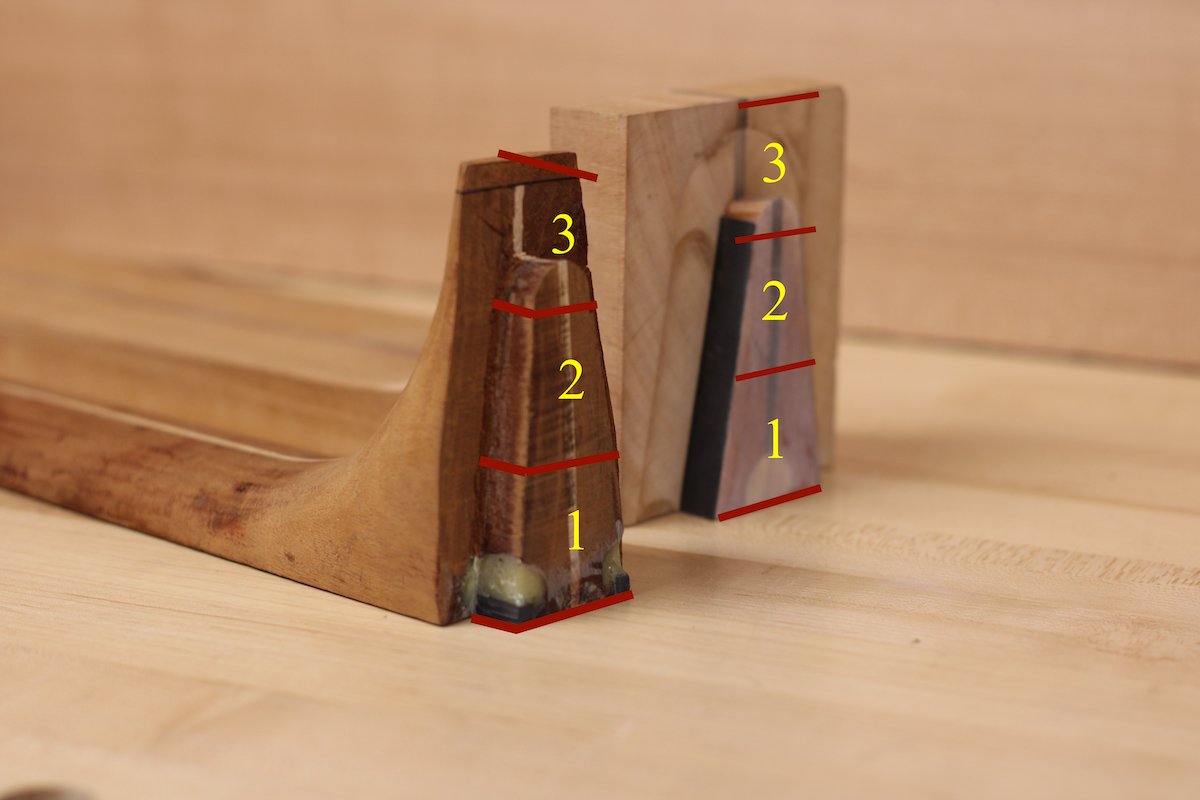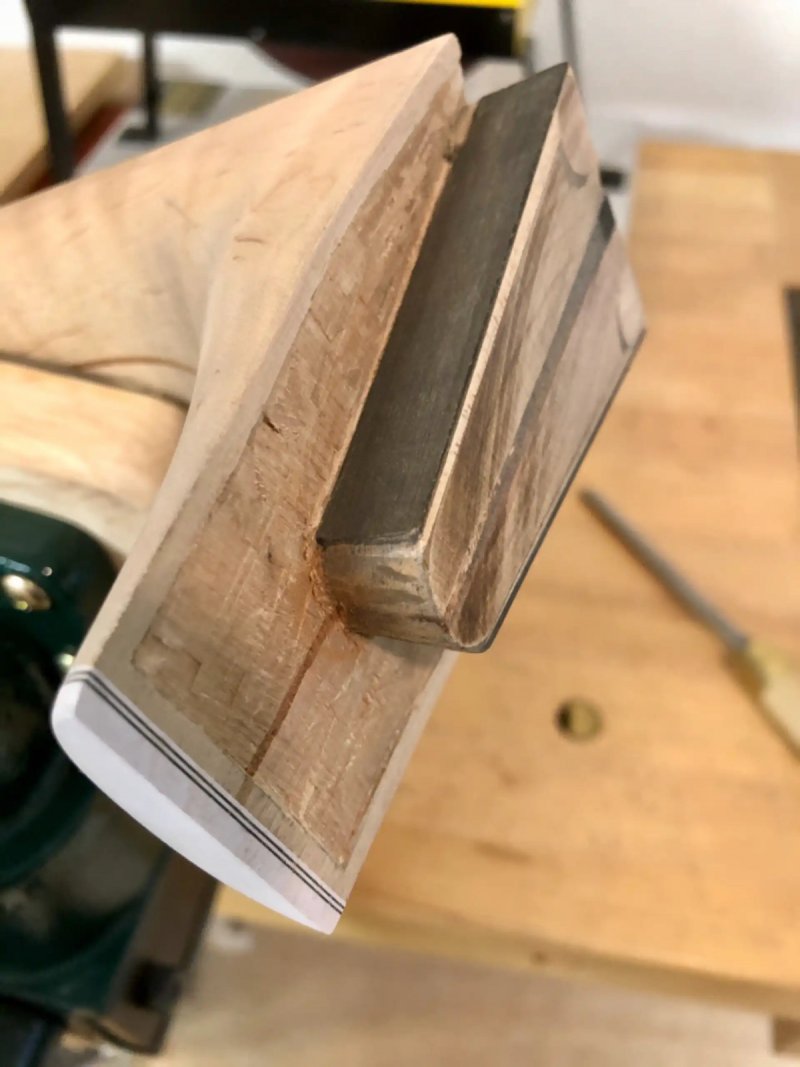It's actually the lower 2/3 of the dovetail that must be fitted with excellence. The upper 1/3 doesn't do much.
I believe I mixed messages, and could have said, "That bottom section of the heel can go down to zero (if you can stand to look at it), so long as the upper 2/3 of the HEEL
dovetail is fitted with excellence.” As you can see in the photo, below, that lower 1/3 of the HEEL is not doing much heavy lifting. As a result, the bottom exterior of the HEEL of the neck (section #3) can be taken down quite thin (in an effort to correct the neck geometry) and the dovetail joint still be viable, though the neck heel becomes visually unattractive.
In the case of the implementation of the “twin compression rods” found in the older Guild 12 strings, there is a large section of dovetail missing from the tenon in that upper 1/3 (section #1). I am not defending the design. In fact, I don’t care for it at all, as it certainly compromises the effectiveness of the upper section of the dovetail, the area of the greatest potential strength.
In the photo, below, the Guild neck in the forefront has had these steel rods replaced with carbon fiber, so the voids that exist(ed) as a result of the drilling for the compression rods have been filled with epoxy. This restored the surface area of the tenon. In the (brand new) neck in the background, it should be clear to see that there is greater surface area available to the joint to be found in sections #1 and #2 (the initial 2/3rds) than you can find in sections #2 and #3. I can (and have) completely removed section #3 (and all of section #2, as well) with no deleterious effect on the stability of the joint. Note that these are wide dovetails having steep, reinforced sides, steeper than found in the necks of old. Perfectly fitted, they *don’t* move.

Here is a photo of an older Guild 12 string Maple neck heel. On this neck I had left the compression rods in place, but rebuilt the slendor tenon, filling the voids that were left by drilling for the rods with more Maple, adding Maple to the sides of the tenon, and adding CF reinforcement to the surface of those sides. With the entire heel in view, I trust it is easier to visualize where the heavy lifting of the joint is occurring.


